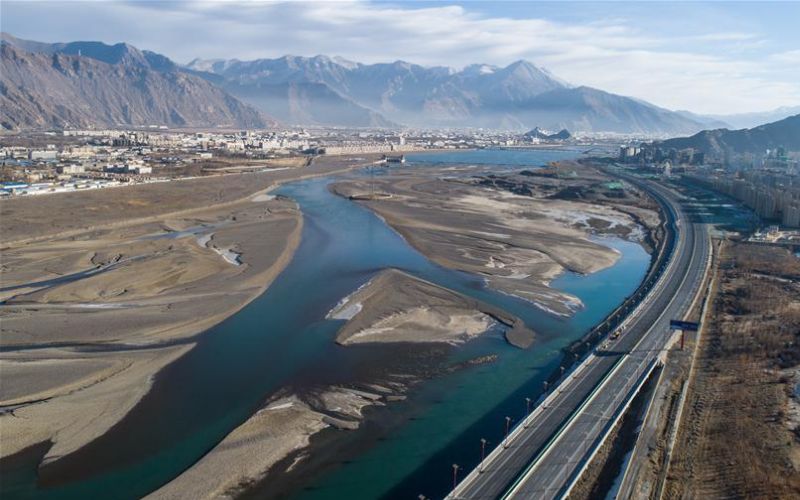
The Chinese government has announced plans to allocate $11.3 billion for infrastructure development in Tibet this year, according to reports from Xinhua. It has claimed that “this investment, representing more than a third of the region's GDP, is aimed at advancing the area's infrastructure, with a particular focus on transport projects, including railways, roads, and up to 10 new airports”. The Chinese Communist Party (CCP) is manipulating economic data to project a misleading image of prosperity within occupied Tibet, obscuring the actual socio-economic conditions on the ground.
Yan Jinhai, chairman of Tibet's regional government, outlined that the funds would also support the development of renewable energy sites. While the investment is presented as a crucial step for the region's development, it also aligns with China's broader strategy of bolstering frontier security, particularly amid escalating border tensions with India. The Tibetan Review suggested that Beijing's infrastructure push in Tibet serves dual purposes: strategic security and winning the support of the local population.
The design and development of dual-use infrastructure often raise concerns about potential misuse or the blurring of lines between civilian and military activities, necessitating careful oversight and international scrutiny to ensure that such facilities serve the broader interests of peace, security, and sustainable development.
The fast-paced growth of infrastructure in Tibet is "dual -use" in nature: they serve both civil and military purposes as far as PRC is concerned. China is building dual use infrastructure in Tibet to enable the rapid deployment of its forces at strategic locations in any eventuality but at the same time fulfill CCP's strategy of cultural assimilation of Tibet.
The Chinese government's portrayal of a 'happy and prosperous' Tibet through its state media is part of a broader misinformation campaign to conceal human rights violations and suppress dissent within the region.
For decades, the Chinese government has faced criticism for its assault on human rights in Tibet, undermining Tibetan autonomy, identity, and faith. The increased infrastructure spending appears to be part of China's broader misinformation campaign, aiming to portray Tibet as 'happy and prosperous' while human rights violations persist.
This development underscores the CCP's disregard for Tibetan autonomy and the ongoing challenges faced by the Tibetan community. As China amplifies its infrastructure initiatives in TAR, it becomes imperative for the international community to scrutinize the true motivations behind these investments and advocate for transparency, human rights, and respect for Tibetan culture and identity.
The situation in Tibet continues to be a focal point of contention, with the Chinese government's actions prompting calls for accountability and justice from global human rights advocates.
Edited and collated by Team TRC